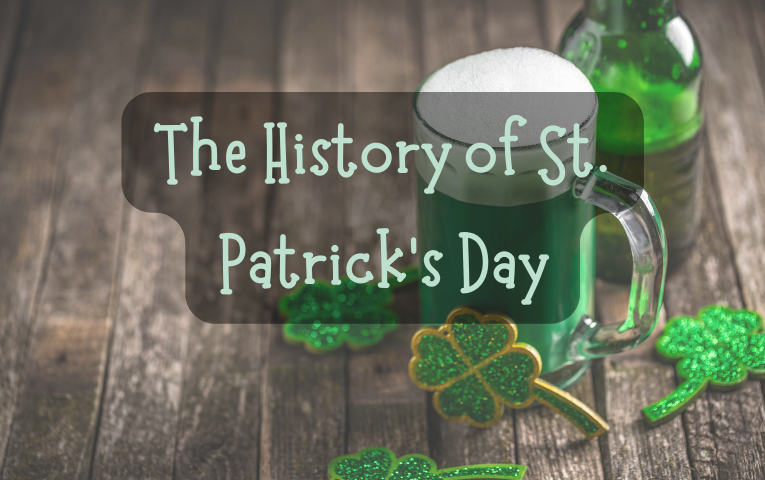
The History of St. Patrick’s Day

St. Patrick's Day, the annual celebration of Ireland's patron saint, has become a major holiday in the United States, with parades, green beer, and shamrocks adorning cities and towns across the country. But how did this holiday, rooted in Irish history and culture, become such a beloved American tradition?
The origins of St. Patrick's Day date back to the early 17th century in Ireland, when it was established as a religious holiday to honor the life and legacy of St. Patrick, who is credited with bringing Christianity to Ireland in the 5th century. March 17th marks the anniversary of St. Patrick's death, and was traditionally observed as a day of solemn religious observance.
It wasn't until Irish immigrants began arriving in America in large numbers in the 19th century that St. Patrick's Day took on its current form as a boisterous celebration of Irish heritage and culture. The first St. Patrick's Day parade is believed to have taken place in New York City in 1762, organized by a group of Irish soldiers serving in the British army. However, it wasn't until the mid-19th century that the parade became an annual event, organized by Irish fraternal organizations and attended by thousands of Irish immigrants and their descendants.
During this time, Irish immigrants faced significant discrimination and hardship in America. They were often seen as a threat to American society, and were subjected to discrimination in employment, housing, and education. The annual St. Patrick's Day parade became a way for the Irish community to assert their presence and celebrate their heritage in the face of this adversity.
The popularity of St. Patrick's Day continued to grow in America throughout the 20th century, fueled by a growing Irish-American community and the commercialization of the holiday. In the 1950s, the Irish government began promoting St. Patrick's Day as a way to boost tourism, and the holiday soon became an international phenomenon.
Today, St. Patrick's Day is celebrated by millions of people around the world, with parades, festivals, and parties in cities from Dublin to New York to Tokyo. In America, St. Patrick's Day has become a major cultural event, with cities like Chicago and Boston hosting some of the largest and most famous St. Patrick's Day parades in the world.
One of the most iconic symbols of St. Patrick's Day in America is the leprechaun, a mischievous fairy from Irish folklore who is said to guard pots of gold at the end of rainbows. The leprechaun first became associated with St. Patrick's Day in the early 20th century, when it was popularized by American advertisers as a way to sell Irish-themed products.

Another important aspect of St. Patrick's Day in America is the tradition of wearing green. Green has long been associated with Ireland, and is said to represent the lush green landscape of the Emerald Isle. On St. Patrick's Day, it is customary to wear green clothing or accessories, and those who fail to do so risk being pinched by their friends and colleagues.
Perhaps the most famous St. Patrick's Day celebration in America is the annual parade in New York City, which is attended by millions of people every year. The first St. Patrick's Day parade in New York City took place in 1762, organized by a group of Irish soldiers who marched through the streets playing music and singing Irish songs. Today, the parade is a massive spectacle featuring marching bands, bagpipers, floats, and more.
Another notable St. Patrick's Day celebration takes place in Chicago, where the city dyes the Chicago River bright green every year in honor of the holiday. The tradition began in 1962, when the city's sanitation workers used green dye to trace illegal dumping in the river. The dyeing of the river has since become a beloved tradition, with thousands of spectators lining the riverfront each year to witness the spectacle.
Boston also hosts a major St. Patrick's Day parade, which is one of the oldest and largest in the country. The first St. Patrick's Day parade in Boston took place in 1737, organized by a group of Irish immigrants who wanted to celebrate their heritage. Today, the parade attracts over a million spectators and features a wide variety of floats, bands, and marchers.
St. Patrick's Day is also celebrated in many other cities and towns across America, from small rural communities to major metropolitan areas. In recent years, there has been a growing movement to promote St. Patrick's Day as a celebration of Irish culture and heritage, rather than just an excuse to drink and party.

While St. Patrick's Day has become a beloved American tradition, it is important to remember its roots in Irish history and culture. As we celebrate this holiday with parades, green beer, and shamrocks, let us also take a moment to honor the legacy of St. Patrick and the contributions of Irish immigrants to our country.
In conclusion, St. Patrick's Day has a rich history that dates back centuries, and has become an important cultural event in America, celebrated by millions of people across the country. From the first St. Patrick's Day parade in New York City to the dyeing of the Chicago River, the holiday has evolved into a colorful, festive celebration of Irish heritage and culture. As we continue to celebrate this holiday in the years to come, let us remember its origins and the contributions of Irish immigrants to our society.
